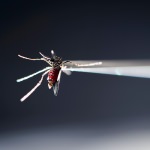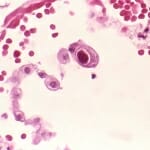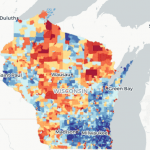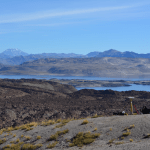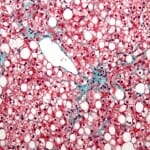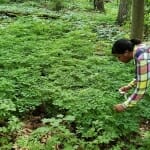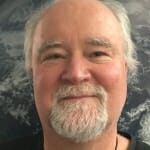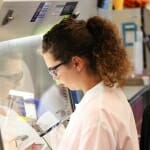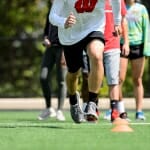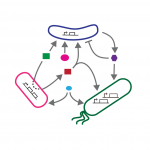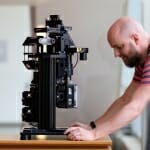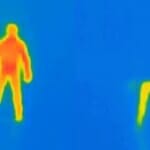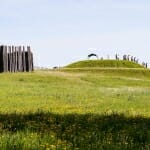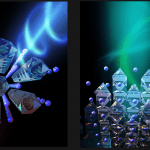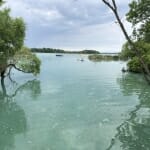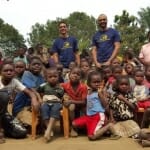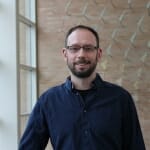Category Science & Technology
Zika virus infection may multiply risk of miscarriage, stillbirth
Researchers at six National Primate Research Centers (NPRCs) combined results from individual studies to find that 26 percent of pregnancies in 50 monkeys infected with Zika virus during the first trimester of pregnancy ended in miscarriage or stillbirth. Read More
Cell therapy is the future, and Wisconsin is the place, UW–Madison expert tells Technology Council
UW–Madison has doctors willing to guide the studies that will make or break cell therapy companies. “If you are a clinician, you need a pioneer spirit to do something that has never been done before,” Jacques Galipeau says, “and there are already many like that here.” Read More
Map helps guide public health decision-making
“We want this to be a tool that everyone can use,” said Amy Kind, an associate professor of medicine. “We hope this will be a catalyst to ... eliminate U.S. health disparities.” Read More
“Ring around bathtub” at giant volcano field shows movement of subterranean magma
It’s a major task to understand a Laguna del Maule mountaintop region that has erupted 50 times over the past 20,000 years. But the starting point of a UW–Madison study is simple: It’s the ring that standing water leaves on a bathtub. Read More
Lipids in blood and liver offer insights into metabolic health
Often, in order to identify a fatty liver, an invasive liver biopsy is required. Taking a blood sample would be a much simpler way to diagnose it. Read More
Muir Woods research works to understand how plants have sex
A UW–Madison researcher is studying how — and why — different plants have sex. Her project involves early meadow-rue plants in Muir Woods. Read More
Stem cell summer camp inspiring early careers in science and technology
The Morgridge Rural Summer Science Camp has allowed more than 500 high-academic achievers from across the state to spend a week learning from leaders in stem cell research, a field that UW–Madison helped make famous. Read More
GPS and other technology help athletes find fitness faster
A sports science class focused on the most popular technologies in the field of human performance in an effort to teach UW–Madison students how to collect data, interpret the information and use it in a meaningful way. Read More
High-powered microscopy coming to a scientist near you
A portable light-sheet microscope that shrinks to the weight and dimensions of a packed suitcase can be mailed to a lab anywhere in the world, configured remotely by Morgridge Institute for Research engineers to run experiments. Read More
‘Stealth’ material hides hot objects from infrared eyes
Hiding from infrared detectors could become much easier, thanks to a new cloaking material that renders objects — and people — practically invisible. Read More
Study finds “hidden harvest” in world’s inland fisheries
A new study published today in the Proceedings of the National Academy of Sciences says we are dramatically underestimating the role inland fisheries play in global food security. Read More
Wisconsin researchers release new app to study what makes ticks ‘tick’
The app helps scientists better understand when and where ticks are picked up and educates people on what kinds of ticks to look out for and how to practice safe habits when venturing outside. Read More
‘Science in Motion’ takes chemistry on the road across Wisconsin
Disappearing packing peanuts, floating mugs, color-changing solutions and skewered balloons captivated a room full of elementary students and their teachers in the style of a magic show. Read More
Heavier rains and manure mean more algae blooms
A recent UW–Madison study shows that the increased frequency of high-intensity rain events is worsening phosphorus runoff from manure-covered agricultural fields more than scientists expected. A new effort aims to address this problem in Dane County. Read More
UW spinoffs win awards, including top honor, at Governor’s Business Plan Contest
The grand prize went to NovoMoto, which packages and sells solar lighting systems under an innovative rent-to-own program in the Democratic Republic of Congo. Read More
Searching the sea, and bacterial battles, for new antibiotics
Researchers in pharmacy and bacteriology say their discovery would not have been possible without a cross-college collaboration going back nearly a decade. Read More

